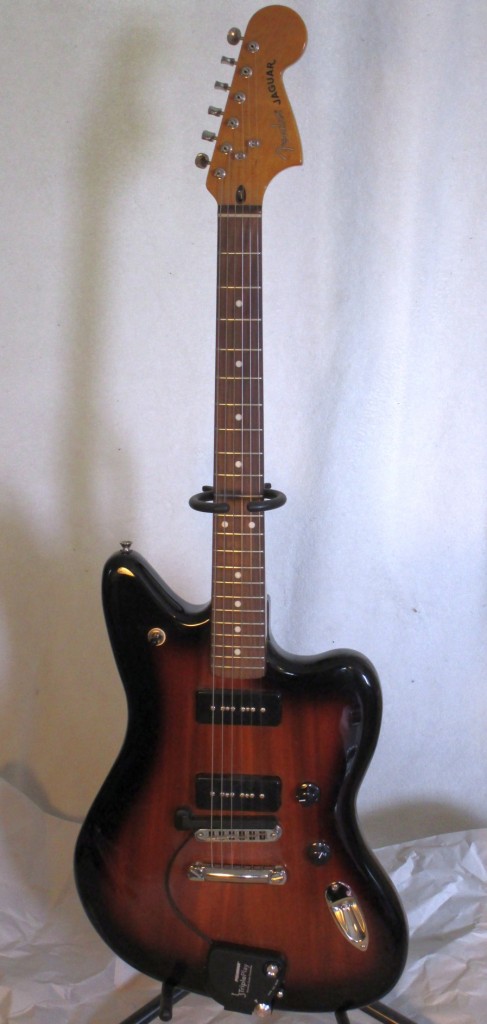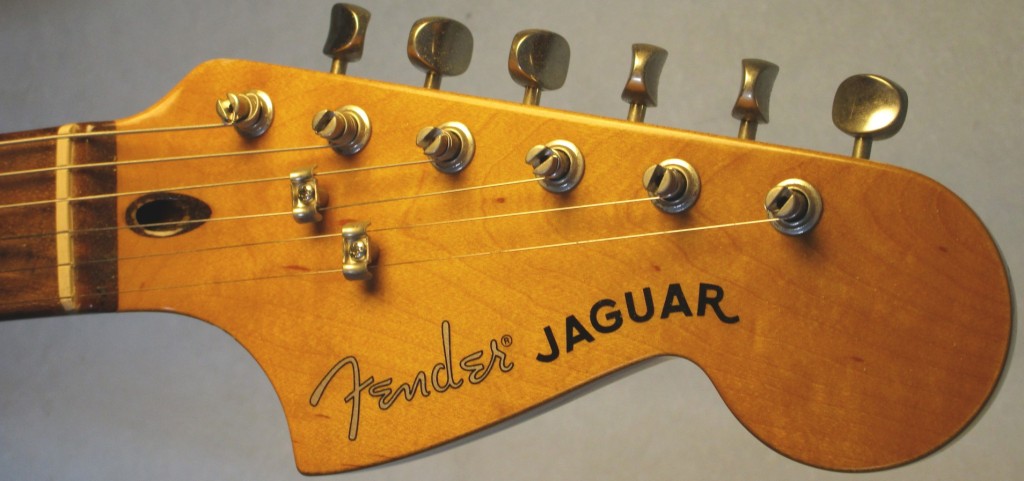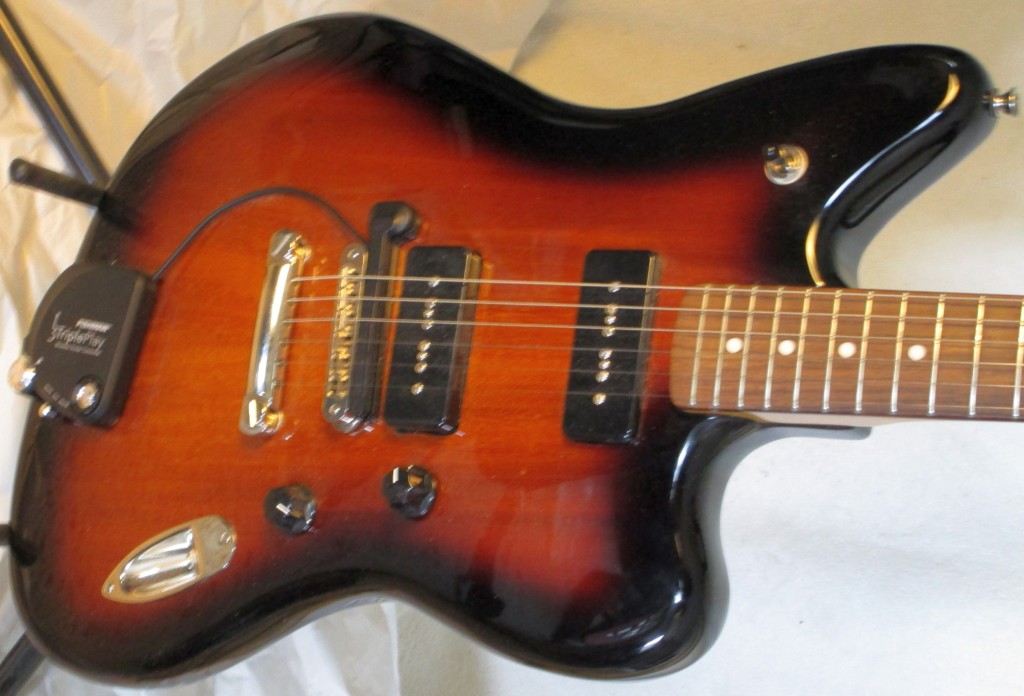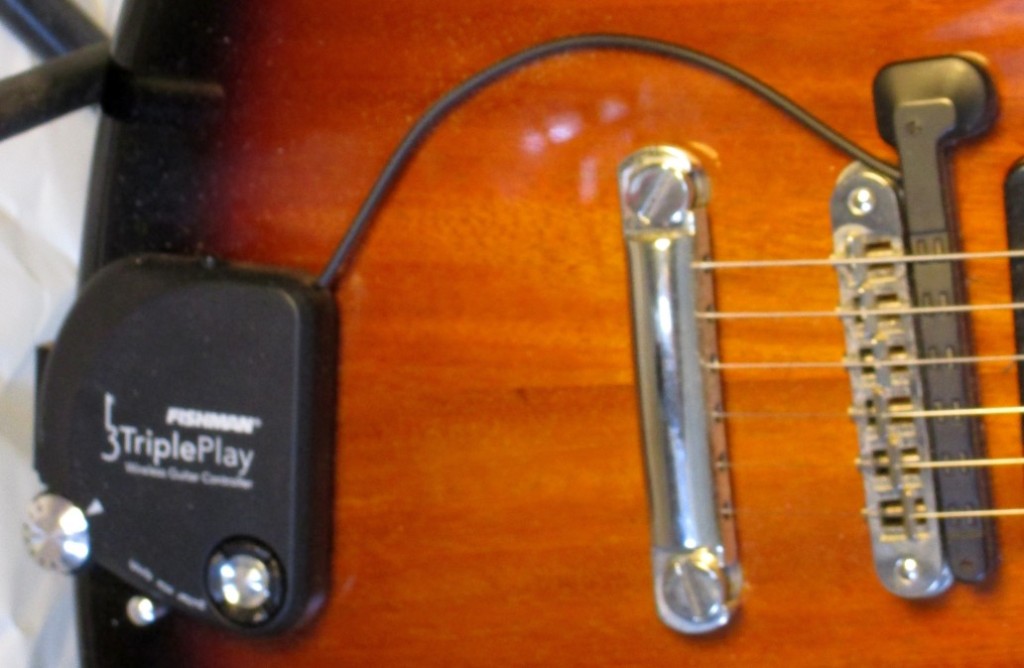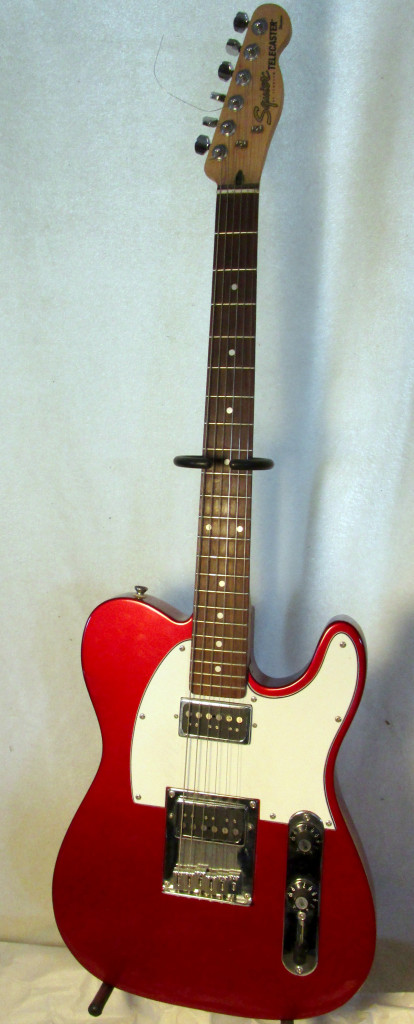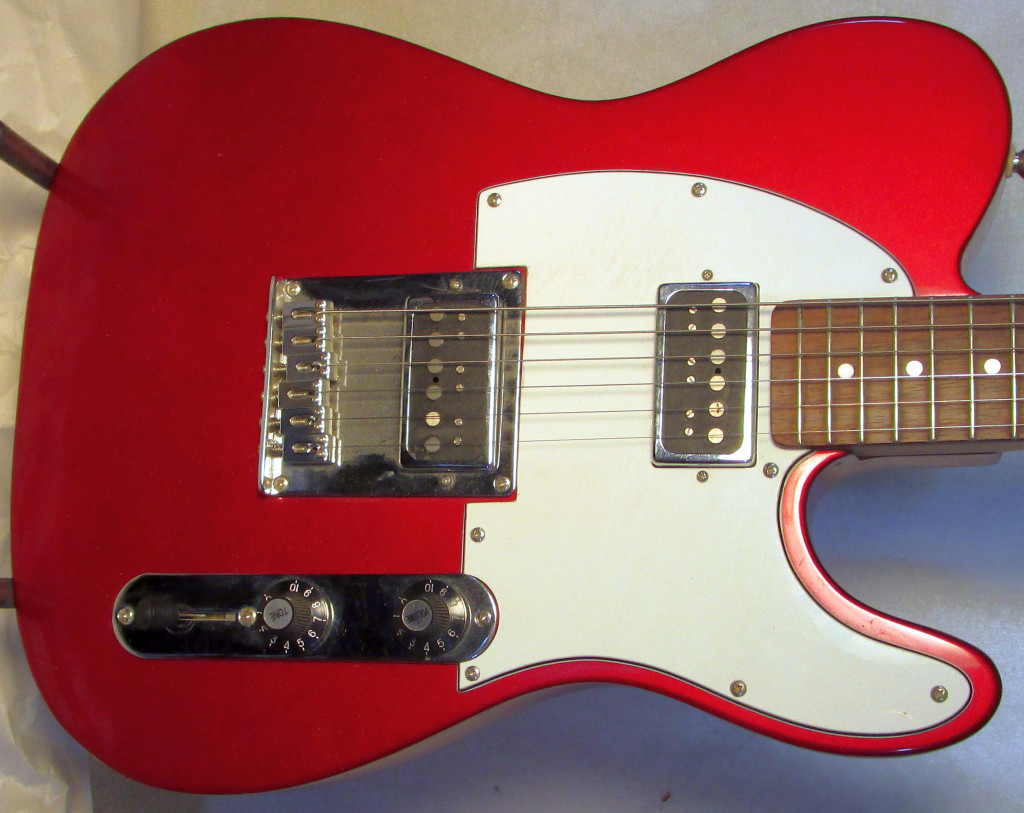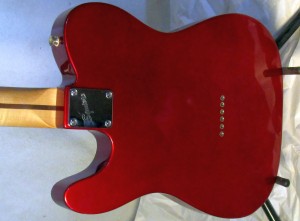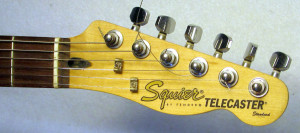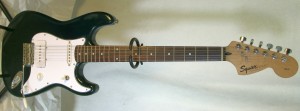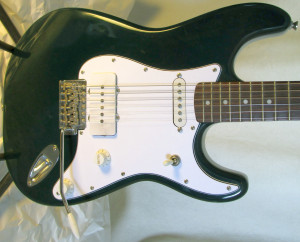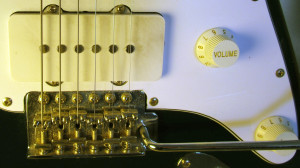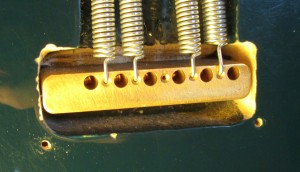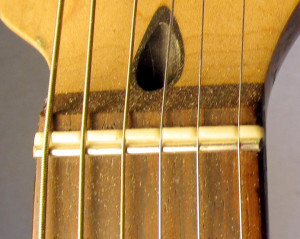This guitar is what happens when a cherished guitar maker decides to throw away its brand equity.
First, some history.
In the 1980’s, Fender was on the ropes. CBS Instruments had pillaged the company and burned the brand to the ground. The only reason to buy a Fender over one of the excellent imported copies was the funny headstock shape and the name on the headstock.
In the late 1980’s, Fender’s employees saved their pennies and bought out the company, and then spent the next decade or so repairing their legacy. The name “Fender” on a guitar actually meant something again. Quality went up, features were refined, new models were brought out, etc.
In order to tap into the ‘beginner instrument’ market, Fender began its Squier line. Cheap, mediocre copies of their classic instruments, sold at the same price as their competitors. Why buy a Cort Strat copy when you could buy a Cort-made Squier with the authentic Fender headstock shape for the same price?
Well, those days are gone!
The Fender employees sold out to a bunch of weasels apparently intent on squeezing every last ounce of cash out of the name.
Calling this Chinese made lump a Fender is a disgrace. Why market this as a Fender instead of a Squier? Well, maybe they figure they can charge a few more dollars for it. Maybe they think it will sell better. While the Fender mystique lasts, that is. Forget about protecting your brand – screwing people is where it’s at!
It’s not as if this is a bad guitar, per se, it’s just that this is, for all intents and purposes, a Squier. It’s like Apple putting their name on a $100 LG smartphone and calling it the new iPhone.
The fret job was very poor. It’s the worst Squier I’ve ever had. I’ve become used to using a file or a claw hammer to drive down one or two high frets, but frets were high on about half the neck!
It plays well. Now that I’ve fixed it anyway. I like the profile of the neck. Similar to my green Squier Strat with the Jazzmaster pickup. The frets are a little small for leads but usable. The short scale really helps on the big bends so that makes up for some of it.
I like that this doesn’t feel quite like a typical copy. The mix of Fender and Gibson works well enough. Like a Firebird mated with a Jaguar. The switch and the volume control aren’t in the best location, but it’s OK. Easy to get to. Too easy – I keep hitting them.
The finish is good for a low end guitar. I like the dark sunburst. Probably hiding cheap-ass wood but I don’t believe it’s plywood. The bridge and tailpiece are quite acceptable. The electronics work, it doesn’t squeal much, the cheap P-90 copies sound like cheap P-90s.
This is the only guitar I have with a flat top and a Gibson style bridge, so I decided to put the Fishman Triple Play on it. It is a wireless guitar Midi interface.
This thing works a treat. The tracking is excellent, provided you clean up your playing. If you’re looking to play guitar and Midi at once, the guitar will suffer. You will need to play very stiffly. Slurring notes together, shambodically bashing away, strumming all 6 strings and muting 5 of them with your left hand won’t do. Clean and precise.
The software works well enough. The built-in instruments work better than any of the free VST plugins I tried. I guess they have too much CPU load – they are laggy no matter how I set them up.
Basically, it is easier learning to clean up your playing to work with this thing than it is to learn a completely new instrument.
The only failing is that although it is wireless, you still need to plug your guitar into your PC’s sound card if you want to use the included guitar effects. Why can’t I plug my guitar directly into this box? A 16 bit 44.1KHz data stream would present negligible bandwidth demands.
SUMMARY: (guitar)
Condition: 9/10
– Cosmetics: 9/10 About what you expect from an imported Chinese guitar
– Working order: 9/10 Now that I fixed the frets, no big problems
Playability: 8/10
– Rhythm Playabiliy: 9/10
– Lead Playability: 7/10 The frets are a little small for shredding
Sound: 7/10
– Bridge: 7/10 Sounds like a cheap P-90
– Neck: 7/10 Also sounds like a cheap P-90!
Mutton dressed as lamb. Fender is destroying their brand by releasing this as a Fender instead of a Squier
SUMMARY: (Fishman Triple Play)
Route the guitar’s signal through the wireless Midi device and I’d recommend it to anyone. As it is, it’s better than the Roland’s I’ve tried, but more for novelty than actual use
